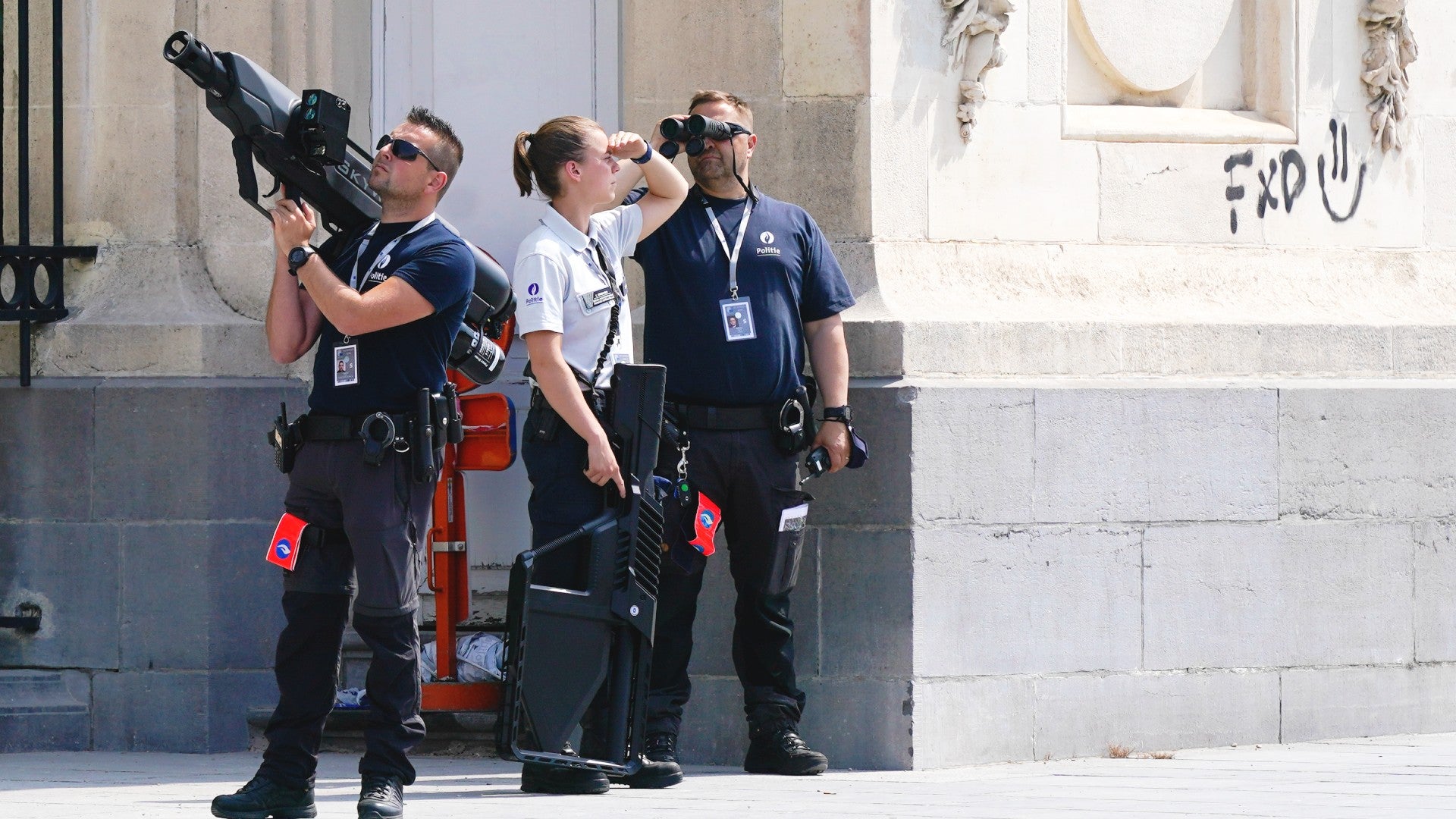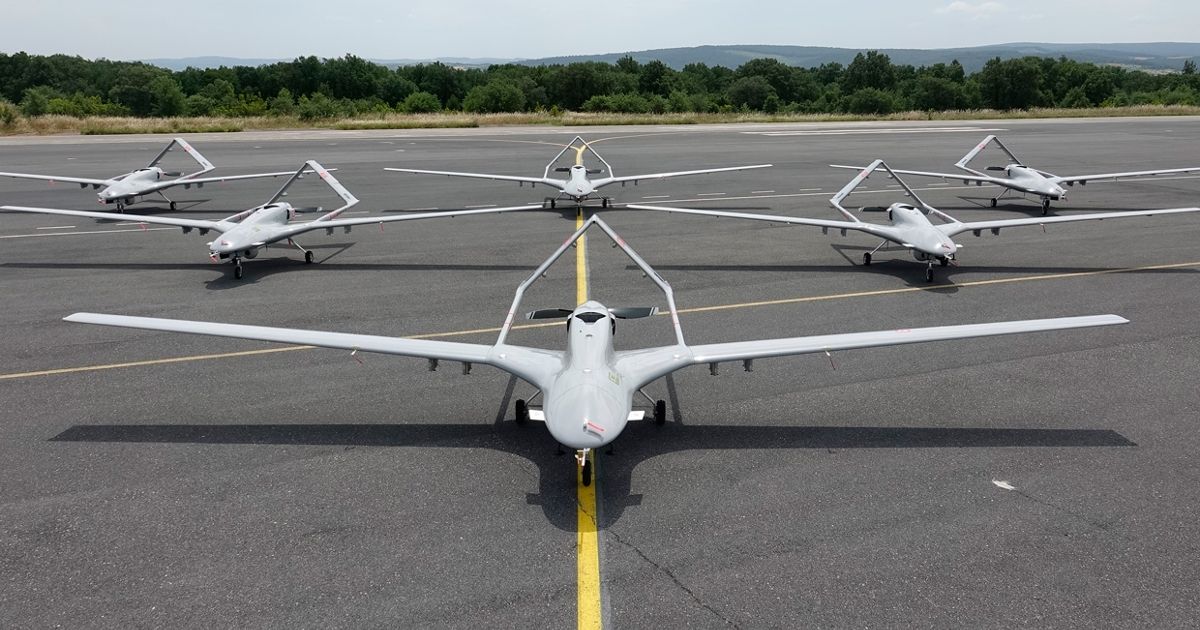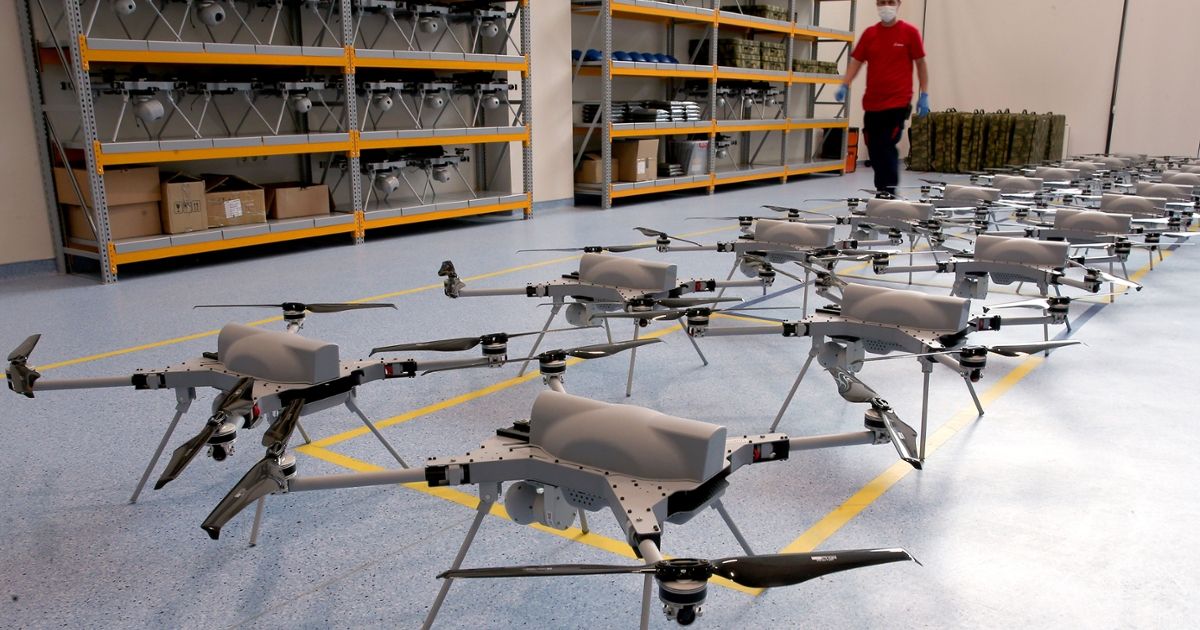
Check Out The Anti-Drone Weapons Carried By Security At Biden's Meeting In Brussels
Images shared to social media show Belgian security forces wielding a combination of handheld anti-drone weapons to protect a meeting between U.S. President Joe Biden and King Philippe of Belgium held on Monday, June 14. Two different types of anti-drone systems were carried by members of the Belgian Federal Police, one which fires a net projectile at drones, and another that uses radiofrequency (RF) jamming to disrupt links between drones and their operators. The deployment of these two systems together is a reminder of how serious the threat of drone attacks or even assassination attempts on high-value targets is worldwide.
The meeting between Biden and King Philippe saw the two discuss issues including the coronavirus pandemic, as well as relations between the European Union (EU) and the United States. President Biden arrived in the Belgian capital of Brussels for a summit of the North Atlantic Treaty Organization (NATO) hosted by the NATO Secretary. The summit in Brussels marks the 31st formal meeting of the heads of state of participating NATO nations and was held to discuss “the challenges of today and tomorrow” including: increased Russian aggression and threats posed by cyber attacks, terrorism, and emerging and disruptive technologies. Climate change and “the rise of China" were also on the docket.
One of the weapons seen being wielded by Belgian Federal Police at Biden’s meeting with King Philippe appears to be the DroneGun Tactical made by Australian firm DroneShield. DroneShield claims the DroneGun Tactical can cause drones to “respond via vertical on the spot landing or return to its remote controller or starting point” when successfully disrupted by its multi-band radiofrequency (RF) jamming attack. These types of anti-drone weapons work by severing the command and control links between drones and their operators, and DroneShield claims the DroneGun Tactical can instantly cease video transmission between them. These types of jammers don't work against autonomous systems which do not rely upon RF links with human controllers, although those systems are far less flexible and are usually only capable of targeting fixed points, not fluid targets that are often in motion.
Leave a Comment
Related Posts
A rogue killer drone 'hunted down' a human target without being instructed to, UN report says
Comment























/cdn.vox-cdn.com/uploads/chorus_asset/file/25012282/236834_Ray_Ban_Meta_Smart_Glasses_AKrales_0608.jpg)
